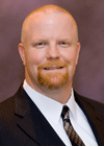When people think of “workplace accidents,” images of construction sites or nuclear power plants usually come to mind. But the truth is, most office jobs don’t involve hazardous chemicals or dangerous heights. The less-than-thrilling reality is that some of the most common workplace injuries come from standard office environments, and even though 4.1 million individuals sustain work injuries or illnesses, most workplace injuries are preventable. In this post, you’ll find eight ways ergonomics can help your office, and ideas to improve your workplace environment.
1. Improve your employee’s physical health…
Ergonomics studies how the equipment and environment of a workplace interact with the human body for optimal performance. The obvious benefit of a sound ergonomic office is that employees are less susceptible to workplace injuries or illnesses. I particularly like this course about common office safety tips; it gives easy ways to avoid workplace injuries. If your employees are kept safe and healthy, you’ve already got an essential part of a successful business.
2. And improve your employee’s mental health
Physical injuries are not the only type of harm that afflict workers in an office environment. There is a whole field of ergonomics, called “engineering psychology” that studies the relationships between humans and machines. Engineering psychology tries to improve how users interact with the technology around them. For example, in the 1920s, Lillian Gilbreth invented the pedal bin, which allowed individuals to more easily throw away their trash. This type of ergonomic improvement, making people feel more comfortable using their equipment, is essential in the modern, technology-filled workplace.
3. Minimize costs in your workplace
If an employee sustains a workplace injury, they are often entitled to “worker’s compensation,” which can cost your company thousands of dollars. By keeping all of your employees safe, you avoid this expensive cost.
4. Increase your employee’s productivity
Happy and safe employees are productive employees. Workplace injuries prevent not only the injured from working, but take time away from their coworkers, your personnel department, and anyone else involved in the accident. Minimizing the number of injuries in your office allows your employees to devote more time to their job.
5. Make you in compliance with OSHA standards
Keeping your employees safe isn’t just a good idea, it’s the law. OSHA has a set of regulations that businesses must follow to keep their workers safe. These online OSHA training courses can show you how your company can comply with OSHA regulations to keep your workplace safe.
6. Prevent nasty lawsuits
If an employee feels their company has neglected to provide them a safe workplace environment, they might feel the need to sue their company for endangerment. And even if they lose the suit, the legal proceedings can cost your company thousands of dollars in legal fees. Keeping a safe workplace avoids these costly suits.
7. Improve your company’s reputation
Workplace injuries don’t just harm your employees, they hurt your business’s reputation. If you can’t keep your workers safe, it will be hard to find other companies who want to do business with you. Having safe and healthy employees expands your business opportunities.
8. Brighten your workplace atmosphere
Knowing that they are working in a safe and healthy environment will have an immediate improvement on your employee’s attitude and well-being. Every person in your company will feel the effect of having a safe workplace.
Micaela Deitch is a Business Development intern working at Open Sesame. She is a rising sophomore at Georgetown University and interested in learning about online education. You can connect her at micaela.deitch@opensesame.com.
Micaela, we really appreciate this your sending us the informative article. Those who work in offices are subject to injury, as well as those out in the field or warehouses. Their comfort and safety is very important to successful business. pb
